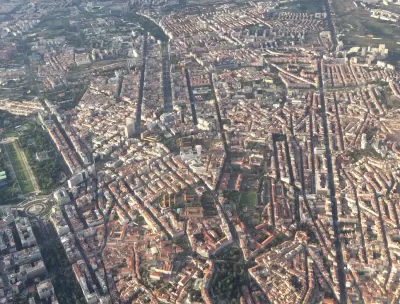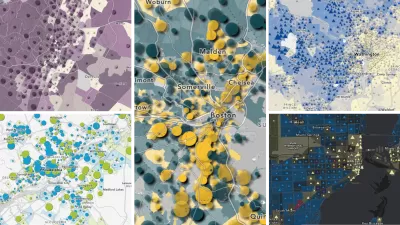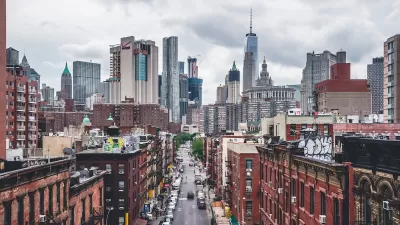Most cities around the world can be broken down into 27 typical patterns of development, according to the work of a researcher at UC Davis.

A close study of the street patterns in cities around the world has shown that most cities are comprised of a combination of 27 development categories—from the urban grid typical of downtown cores to superblocks, new urbanist neighborhoods and the "loops & lollipops" suburban style cul-de-sac development. Emily Badger reports in the The Washington Post’s Wonkblog on the work of University of California at Davis professor Stephen Wheeler, who combed over satellite imagery of multiple metropolitan areas around the world to produce striking maps showing the distribution of the varied development patterns.
What's interesting about these 27 categories that Wheeler has defined, covering the full range of development patterns in two dozen metropolitan regions he has studied worldwide, is that most of them are new. Relatively speaking.
"We have had an explosion of different types of built landscapes in the last century," says Wheeler, who is working on a book about these patterns.
Wheeler's work has shown that the most common type of development is primarily associated with suburbs and exurbs—the patterns of development commonly associated with the car. Wheeler believes his work will help people to understand the role that varied development patterns affect "how we travel, how much time we commute, whether we walk, how healthy we are as a result, how our communities affect the climate and how much pollution we generate."
FULL STORY: The 27 patterns that make up the world’s cities and suburbs

Planetizen Federal Action Tracker
A weekly monitor of how Trump’s orders and actions are impacting planners and planning in America.

Congressman Proposes Bill to Rename DC Metro “Trump Train”
The Make Autorail Great Again Act would withhold federal funding to the system until the Washington Metropolitan Area Transit Authority (WMATA), rebrands as the Washington Metropolitan Authority for Greater Access (WMAGA).

DARTSpace Platform Streamlines Dallas TOD Application Process
The Dallas transit agency hopes a shorter permitting timeline will boost transit-oriented development around rail stations.

Renters Now Outnumber Homeowners in Over 200 US Suburbs
High housing costs in city centers and the new-found flexibility offered by remote work are pushing more renters to suburban areas.

The Tiny, Adorable $7,000 Car Turning Japan Onto EVs
The single seat Mibot charges from a regular plug as quickly as an iPad, and is about half the price of an average EV.

Supreme Court Ruling in Pipeline Case Guts Federal Environmental Law
The decision limits the scope of a federal law that mandates extensive environmental impact reviews of energy, infrastructure, and transportation projects.
Urban Design for Planners 1: Software Tools
This six-course series explores essential urban design concepts using open source software and equips planners with the tools they need to participate fully in the urban design process.
Planning for Universal Design
Learn the tools for implementing Universal Design in planning regulations.
Municipality of Princeton
Roanoke Valley-Alleghany Regional Commission
City of Mt Shasta
City of Camden Redevelopment Agency
City of Astoria
Transportation Research & Education Center (TREC) at Portland State University
US High Speed Rail Association
City of Camden Redevelopment Agency
Municipality of Princeton (NJ)





























